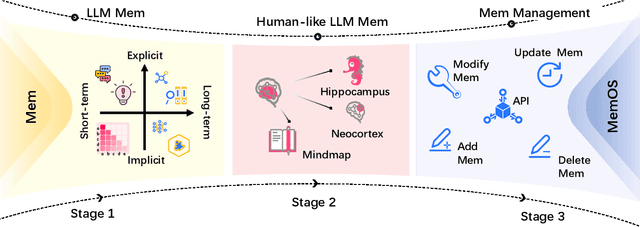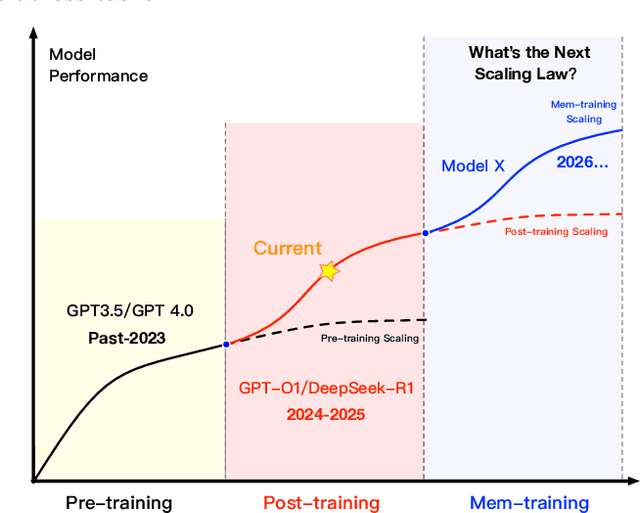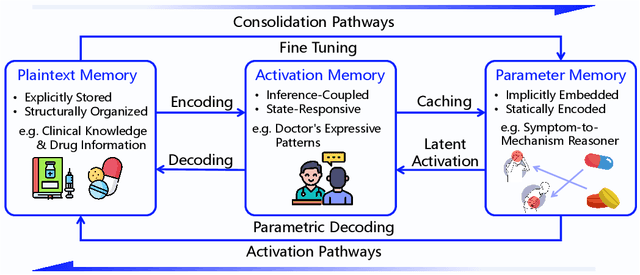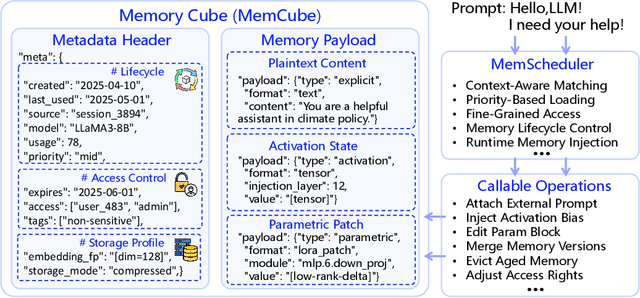Tianyi Chen
School of Civil and Environmental Engineering, Nanyang Technological University, Singapore
BiRQ: Bi-Level Self-Labeling Random Quantization for Self-Supervised Speech Recognition
Sep 18, 2025Abstract:Speech is a rich signal, and labeled audio-text pairs are costly, making self-supervised learning essential for scalable representation learning. A core challenge in speech SSL is generating pseudo-labels that are both informative and efficient: strong labels, such as those used in HuBERT, improve downstream performance but rely on external encoders and multi-stage pipelines, while efficient methods like BEST-RQ achieve simplicity at the cost of weaker labels. We propose BiRQ, a bilevel SSL framework that combines the efficiency of BEST-RQ with the refinement benefits of HuBERT-style label enhancement. The key idea is to reuse part of the model itself as a pseudo-label generator: intermediate representations are discretized by a random-projection quantizer to produce enhanced labels, while anchoring labels derived directly from the raw input stabilize training and prevent collapse. Training is formulated as an efficient first-order bilevel optimization problem, solved end-to-end with differentiable Gumbel-softmax selection. This design eliminates the need for external label encoders, reduces memory cost, and enables iterative label refinement in an end-to-end fashion. BiRQ consistently improves over BEST-RQ while maintaining low complexity and computational efficiency. We validate our method on various datasets, including 960-hour LibriSpeech, 150-hour AMI meetings and 5,000-hour YODAS, demonstrating consistent gains over BEST-RQ.
Self-Supervised Pre-Training with Equilibrium Constraints
Aug 27, 2025Abstract:Self-supervised pre-training using unlabeled data is widely used in machine learning. In this paper, we propose a new self-supervised pre-training approach to dealing with heterogeneous data. Instead of mixing all the data and minimizing the averaged global loss in the conventional way, we impose additional equilibrium constraints to ensure that the models optimizes each source of heterogeneous data to its local optima after $K$-step gradient descent initialized from the model. We formulate this as a bilevel optimization problem, and use the first-order approximation method to solve the problem. We discuss its connection to model-agnostic meta learning (MAML). Experiments are carried out on self-supervised pre-training using multi-domain and multilingual datasets, demonstrating that the proposed approach can significantly improve the adaptivity of the self-supervised pre-trained model for the downstream supervised fine-tuning tasks.
Phi-Ground Tech Report: Advancing Perception in GUI Grounding
Jul 31, 2025



Abstract:With the development of multimodal reasoning models, Computer Use Agents (CUAs), akin to Jarvis from \textit{"Iron Man"}, are becoming a reality. GUI grounding is a core component for CUAs to execute actual actions, similar to mechanical control in robotics, and it directly leads to the success or failure of the system. It determines actions such as clicking and typing, as well as related parameters like the coordinates for clicks. Current end-to-end grounding models still achieve less than 65\% accuracy on challenging benchmarks like ScreenSpot-pro and UI-Vision, indicating they are far from being ready for deployment. % , as a single misclick can result in unacceptable consequences. In this work, we conduct an empirical study on the training of grounding models, examining details from data collection to model training. Ultimately, we developed the \textbf{Phi-Ground} model family, which achieves state-of-the-art performance across all five grounding benchmarks for models under $10B$ parameters in agent settings. In the end-to-end model setting, our model still achieves SOTA results with scores of \textit{\textbf{43.2}} on ScreenSpot-pro and \textit{\textbf{27.2}} on UI-Vision. We believe that the various details discussed in this paper, along with our successes and failures, not only clarify the construction of grounding models but also benefit other perception tasks. Project homepage: \href{https://zhangmiaosen2000.github.io/Phi-Ground/}{https://zhangmiaosen2000.github.io/Phi-Ground/}
One-Step Flow Policy Mirror Descent
Jul 31, 2025Abstract:Diffusion policies have achieved great success in online reinforcement learning (RL) due to their strong expressive capacity. However, the inference of diffusion policy models relies on a slow iterative sampling process, which limits their responsiveness. To overcome this limitation, we propose Flow Policy Mirror Descent (FPMD), an online RL algorithm that enables 1-step sampling during policy inference. Our approach exploits a theoretical connection between the distribution variance and the discretization error of single-step sampling in straight interpolation flow matching models, and requires no extra distillation or consistency training. We present two algorithm variants based on flow policy and MeanFlow policy parametrizations, respectively. Extensive empirical evaluations on MuJoCo benchmarks demonstrate that our algorithms show strong performance comparable to diffusion policy baselines while requiring hundreds of times fewer function evaluations during inference.
Symbolic identification of tensor equations in multidimensional physical fields
Jul 02, 2025Abstract:Recently, data-driven methods have shown great promise for discovering governing equations from simulation or experimental data. However, most existing approaches are limited to scalar equations, with few capable of identifying tensor relationships. In this work, we propose a general data-driven framework for identifying tensor equations, referred to as Symbolic Identification of Tensor Equations (SITE). The core idea of SITE--representing tensor equations using a host-plasmid structure--is inspired by the multidimensional gene expression programming (M-GEP) approach. To improve the robustness of the evolutionary process, SITE adopts a genetic information retention strategy. Moreover, SITE introduces two key innovations beyond conventional evolutionary algorithms. First, it incorporates a dimensional homogeneity check to restrict the search space and eliminate physically invalid expressions. Second, it replaces traditional linear scaling with a tensor linear regression technique, greatly enhancing the efficiency of numerical coefficient optimization. We validate SITE using two benchmark scenarios, where it accurately recovers target equations from synthetic data, showing robustness to noise and small sample sizes. Furthermore, SITE is applied to identify constitutive relations directly from molecular simulation data, which are generated without reliance on macroscopic constitutive models. It adapts to both compressible and incompressible flow conditions and successfully identifies the corresponding macroscopic forms, highlighting its potential for data-driven discovery of tensor equation.
Scalable Complexity Control Facilitates Reasoning Ability of LLMs
May 29, 2025Abstract:The reasoning ability of large language models (LLMs) has been rapidly advancing in recent years, attracting interest in more fundamental approaches that can reliably enhance their generalizability. This work demonstrates that model complexity control, conveniently implementable by adjusting the initialization rate and weight decay coefficient, improves the scaling law of LLMs consistently over varying model sizes and data sizes. This gain is further illustrated by comparing the benchmark performance of 2.4B models pretrained on 1T tokens with different complexity hyperparameters. Instead of fixing the initialization std, we found that a constant initialization rate (the exponent of std) enables the scaling law to descend faster in both model and data sizes. These results indicate that complexity control is a promising direction for the continual advancement of LLMs.
ProCrop: Learning Aesthetic Image Cropping from Professional Compositions
May 28, 2025Abstract:Image cropping is crucial for enhancing the visual appeal and narrative impact of photographs, yet existing rule-based and data-driven approaches often lack diversity or require annotated training data. We introduce ProCrop, a retrieval-based method that leverages professional photography to guide cropping decisions. By fusing features from professional photographs with those of the query image, ProCrop learns from professional compositions, significantly boosting performance. Additionally, we present a large-scale dataset of 242K weakly-annotated images, generated by out-painting professional images and iteratively refining diverse crop proposals. This composition-aware dataset generation offers diverse high-quality crop proposals guided by aesthetic principles and becomes the largest publicly available dataset for image cropping. Extensive experiments show that ProCrop significantly outperforms existing methods in both supervised and weakly-supervised settings. Notably, when trained on the new dataset, our ProCrop surpasses previous weakly-supervised methods and even matches fully supervised approaches. Both the code and dataset will be made publicly available to advance research in image aesthetics and composition analysis.
MemOS: An Operating System for Memory-Augmented Generation (MAG) in Large Language Models
May 28, 2025



Abstract:Large Language Models (LLMs) have emerged as foundational infrastructure in the pursuit of Artificial General Intelligence (AGI). Despite their remarkable capabilities in language perception and generation, current LLMs fundamentally lack a unified and structured architecture for handling memory. They primarily rely on parametric memory (knowledge encoded in model weights) and ephemeral activation memory (context-limited runtime states). While emerging methods like Retrieval-Augmented Generation (RAG) incorporate plaintext memory, they lack lifecycle management and multi-modal integration, limiting their capacity for long-term knowledge evolution. To address this, we introduce MemOS, a memory operating system designed for LLMs that, for the first time, elevates memory to a first-class operational resource. It builds unified mechanisms for representation, organization, and governance across three core memory types: parametric, activation, and plaintext. At its core is the MemCube, a standardized memory abstraction that enables tracking, fusion, and migration of heterogeneous memory, while offering structured, traceable access across tasks and contexts. MemOS establishes a memory-centric execution framework with strong controllability, adaptability, and evolvability. It fills a critical gap in current LLM infrastructure and lays the groundwork for continual adaptation, personalized intelligence, and cross-platform coordination in next-generation intelligent systems.
WINA: Weight Informed Neuron Activation for Accelerating Large Language Model Inference
May 26, 2025Abstract:The growing computational demands of large language models (LLMs) make efficient inference and activation strategies increasingly critical. While recent approaches, such as Mixture-of-Experts (MoE), leverage selective activation but require specialized training, training-free sparse activation methods offer broader applicability and superior resource efficiency through their plug-and-play design. However, many existing methods rely solely on hidden state magnitudes to determine activation, resulting in high approximation errors and suboptimal inference accuracy. To address these limitations, we propose WINA (Weight Informed Neuron Activation), a novel, simple, and training-free sparse activation framework that jointly considers hidden state magnitudes and the column-wise $\ell_2$-norms of weight matrices. We show that this leads to a sparsification strategy that obtains optimal approximation error bounds with theoretical guarantees tighter than existing techniques. Empirically, WINA also outperforms state-of-the-art methods (e.g., TEAL) by up to $2.94\%$ in average performance at the same sparsity levels, across a diverse set of LLM architectures and datasets. These results position WINA as a new performance frontier for training-free sparse activation in LLM inference, advancing training-free sparse activation methods and setting a robust baseline for efficient inference. The source code is available at https://github.com/microsoft/wina.
Why 1 + 1 < 1 in Visual Token Pruning: Beyond Naive Integration via Multi-Objective Balanced Covering
May 15, 2025Abstract:Existing visual token pruning methods target prompt alignment and visual preservation with static strategies, overlooking the varying relative importance of these objectives across tasks, which leads to inconsistent performance. To address this, we derive the first closed-form error bound for visual token pruning based on the Hausdorff distance, uniformly characterizing the contributions of both objectives. Moreover, leveraging $\epsilon$-covering theory, we reveal an intrinsic trade-off between these objectives and quantify their optimal attainment levels under a fixed budget. To practically handle this trade-off, we propose Multi-Objective Balanced Covering (MoB), which reformulates visual token pruning as a bi-objective covering problem. In this framework, the attainment trade-off reduces to budget allocation via greedy radius trading. MoB offers a provable performance bound and linear scalability with respect to the number of input visual tokens, enabling adaptation to challenging pruning scenarios. Extensive experiments show that MoB preserves 96.4% of performance for LLaVA-1.5-7B using only 11.1% of the original visual tokens and accelerates LLaVA-Next-7B by 1.3-1.5$\times$ with negligible performance loss. Additionally, evaluations on Qwen2-VL and Video-LLaVA confirm that MoB integrates seamlessly into advanced MLLMs and diverse vision-language tasks.
 Add to Chrome
Add to Chrome Add to Firefox
Add to Firefox Add to Edge
Add to Edge